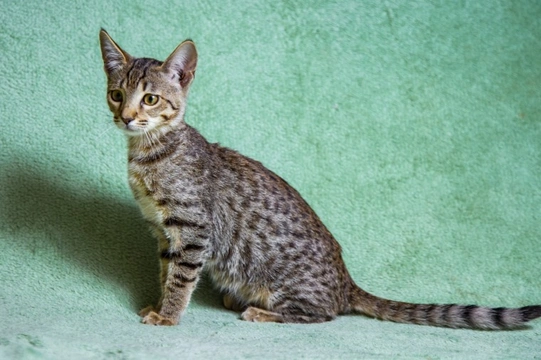
Why are Savannah cats so expensive to buy?
The Savannah cat is a beautiful, distinctive and fairly uncommon cat breed in the UK, and one that many people aspire to own one day. However, not everyone who might hold out hope of owning a Savannah cat of their own will ultimately be able to do so – because the Savannah cat is in fact the most expensive cat breed in the UK to buy, bar none, which means that not everyone who would like to own a Savannah cat can afford their initial purchase price.
Whilst it can be frustrating and disappointing to find out that a cat will fall outside of your budget or to know that you may have to delay your purchase until a future point at which you can save enough money, knowing why the cat in question is so expensive can be useful information to have.
In this article we will look at the range of factors that combined, help to contribute to making the Savannah cat the most expensive cat breed to buy in the UK, and why this is. Read on to learn more.
How much do Savannah cats cost?
Based on the average asking prices stated in adverts on Pets4Homes for Savannah cats for sale in the UK during 2018, the average asking price for pedigree (TICA) registered Savannah cats is £1,380 each, ad for non-pedigrees, £982 each, which even for a non-pedigree is most than for the average pedigree of any other given breed!
So, why are Savannah cats in the UK so expensive? A range of factors help to contribute to this, including:
The Savannah is a very new cat breed
First of all, the breed that we call the Savannah only first came into being during the 1990s, and as such, it is a very young cat breed. The breed is not recognised by the GCCF (Governing Council of the Cat Fancy) in the UK as a pedigree breed that can be registered, as the breed is not yet well enough established, with sufficient numbers, uniformity, and a stable breed population to determine any health or welfare challenges, or a breed standard.
The fact that the Savannah is a new breed and had yet to receive GCCF accreditation means that there is limited information and support for prospective breeders, and producing Savannahs is an expensive and specialist endeavour.
The Savannah is a wild cat hybrid
The Savannah is a wild cat hybrid, with a serval as an ancestor and naturally, breeding and dealing with a hybrid crossing is not for everyone. The traits any given Savannah possesses can be very variable.
The limited number of Savannahs that can be used for breeding, the need to import parent cats and first generation cats from abroad where servals are more commonly owned and kept, and all of the other implications mean that the wild side of the breed’s heritage is complicated and costly.
Savannah cats are rare
The Savannah cat is not particularly common as a whole, and so finding viable mating matches to breed from can be difficult and take time and patience. The breed’s gene pool is relatively small too, and so ensuring genetic diversity whilst maintaining the breed’s core traits is challenging as well.
First-generation Savannah cats are really hard to produce
The first generation crossing of a serval with a domestic cat is very difficult to achieve, and prone to many failures for every success. This gets easier in subsequent generations, but the difficulty in producing those first generation cats in a breed line make them very valuable – and costly to achieve in the first place – which means the breed as a whole costs more at every level.
Servals are often very selective about mates and some will not mate with domestic cats full stop, and as the term of pregnancy of the two species are ten days apart too, a significant number of successful matings ultimately result in miscarriage, premature birth, and other related issues.
The acceptable breed registration colours and patterns are limited
As mentioned, the GCCF doesn’t recognise the Savannah cat for pedigree registration in the UK, so when we talk about pedigree Savannah cats, we’re referring to the TICA registry, or The International Cat Association.
TICA stipulates the potential colour and pattern combinations a Savannah cat might display, and limits these to spotted coats in brown tabby, silver tabby, black, or black smoke, and refers to all other colour and pattern combinations that might occur as non-standard.
This means that producing cats with coats that match the set breed standard can be hit or miss, and so, makes said cats more valuable as a result.
Demand far outweighs supply
Ultimately, market forces hold more sway than any other individual element when it comes to dictating the price of a Savannah cat, other type of cat or anything else for that matter.
When it comes to the Savannah cat today in the UK, demand for the breed far outstrips supply, which means that sellers charging a premium don’t have to struggle to sell their stock – and this keeps Savannah cat prices consistently high.



